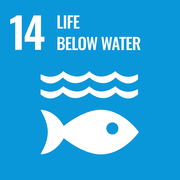
Criticalities of the Italian seabed: the Atlas presented
On September 27, 2021, the MaGIC project (Marine Geohazards along the Italian Coasts) was presented at the Chamber of Deputies. The project is the Atlas of the Italian seabed's geological hazards produced by three institutes of the National Research Council (CNR - project coordinator), seven universities and the National Institute of Oceanography and Applied Geophysics (OGS). The Department of Civil Protection funded MaGIC with 5.25 million euros. The project's scientific coordinator is Francesco L. Chioci, professor at the Department of Earth Sciences associated with the CNR.
Thanks to new technologies, the underwater world is increasingly revealing its secrets, and what emerges is not always reassuring. Due to their active geology, the Italian seas are often characterised by landslide-prone seabeds, furrowed by deep canyons where avalanches of debris pour in, especially during earthquakes or major river floods, forming sort of mud rivers that flow over the seabed, eroding it. Another characteristic of our country is the presence of straits (e.g. the Strait of Messina, Sicily) where strong currents accelerate, causing large sand or gravel dunes to migrate.
In addition to the geological and ecological significance of the underwater environment, all these phenomena may be particularly relevant to the use of the seabed for telecommunications connections. Submarine geological movements can damage or destroy the undersea cables where 99% of telephone communications and internet traffic passes today. In 2008, a mere few hours of interruptions of the FLAG cable off Alexandria in Egypt caused losses of tens of millions of euros, cutting off the internet connection to 75 million people in the Middle East. In 2003, an earthquake in Algeria caused a large number of submarine landslides along one hundred kilometres of the Mediterranean margin, which interrupted four submarine cables in about 20 different places. An increasing number of cables, pipelines and other infrastructures (e.g. those related to renewable energies from waves, currents and tides) are being installed on the seabed, which is why knowledge of geo-archaeology is crucial for the development of sea-based economies.
